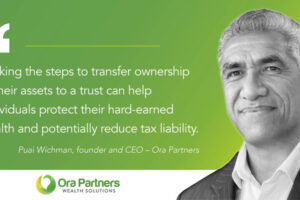ELSS Or PPF: Which Is The Better Tax-Saving Investment Option?
With the financial year taking its last breath, several investors often indulge themselves in last-minute tax-saving investment option shopping. With different tax-saving investments available to an investor, it could get quite overwhelming to choose the apt tax-saving investment at the last moment. Amid the rush, Public Provident Fund (PPF) and Equity-Linked Savings Scheme (ELSS) are two of the most popular tax-saving investments available to investors. This article aims to offer a distinctive analysis between the two popular types of investments.

PPF vs ELSS mutual funds
The following table summarizes the differences between ELSS tax saving mutual funds and PPF
| Basis of comparison | PPF | ELSS |
| Risk | As the funds collected in PPF are used by the government, these investment options are relatively safe | Investments in ELSS mutual funds are subject to market risks |
| Returns | The interest rates for PPF investments are announced by The Indian government every year. It is usually between 7 – 8% p.a. | The returns on ELSS funds differ basis the scheme chosen. However, an investor can look for returns around 12 to 14% p.a. when invested for a prolonged duration |
| Volatility | As PPF investments are backed by the Government of India where investors earn a fixed rate of interest, there is little to no volatility associated wit PPF investments | As ELSS funds invest a minimum of 80% of their assets in equity and equity-related securities, they are subject to volatility and market fluctuations. |
| Tax benefits | PPF enjoy EEE benefits (Exempt Exempt Exempt) – This basically means that the amount invested in PPF is exempt from taxes at the time of investment, accumulation, and redemption. | ELSS investments are subject to long-term capital gains (LTCG) that are taxed at 10% p.a. for gains exceeding over and above Rs 1 lac. |
| Lock-in period | PPF schemes have a mandatory lock-in tenure of fifteen years. However, after the 5th year, an investor can make partial withdrawals | ELSS funds have a mandatory lock-in period of three years and there is no provision to withdraw funds prematurely in ELSS investments |
| Investment horizon | PPF schemes have an investment horizon of fifteen years. However, it can be extended up to to additional five years. | You can invest in ELSS for ‘n’ no of years – there is no upper limit |
| Offered by | PPF schemes are offered by the post office and banks | ELSS mutual funds are managed by a fund manager and offered by AMC (asset management company) or fund houses |
Whether you decide to go forward with tax-saving mutual funds or PPF schemes entirely depends on your investment horizon, financial goals, and risk appetite. If you a risk-averse investor, you might consider opting for PPF schemes. However, if you wish the ride the volatility, ELSS funds might be the better bet for you. Remember to not invest in tax-saving investments for the sole purpose of saving tax. The right tax-saving investment is the one that best aligns with your financial portfolio. Happy investing!





































No comments